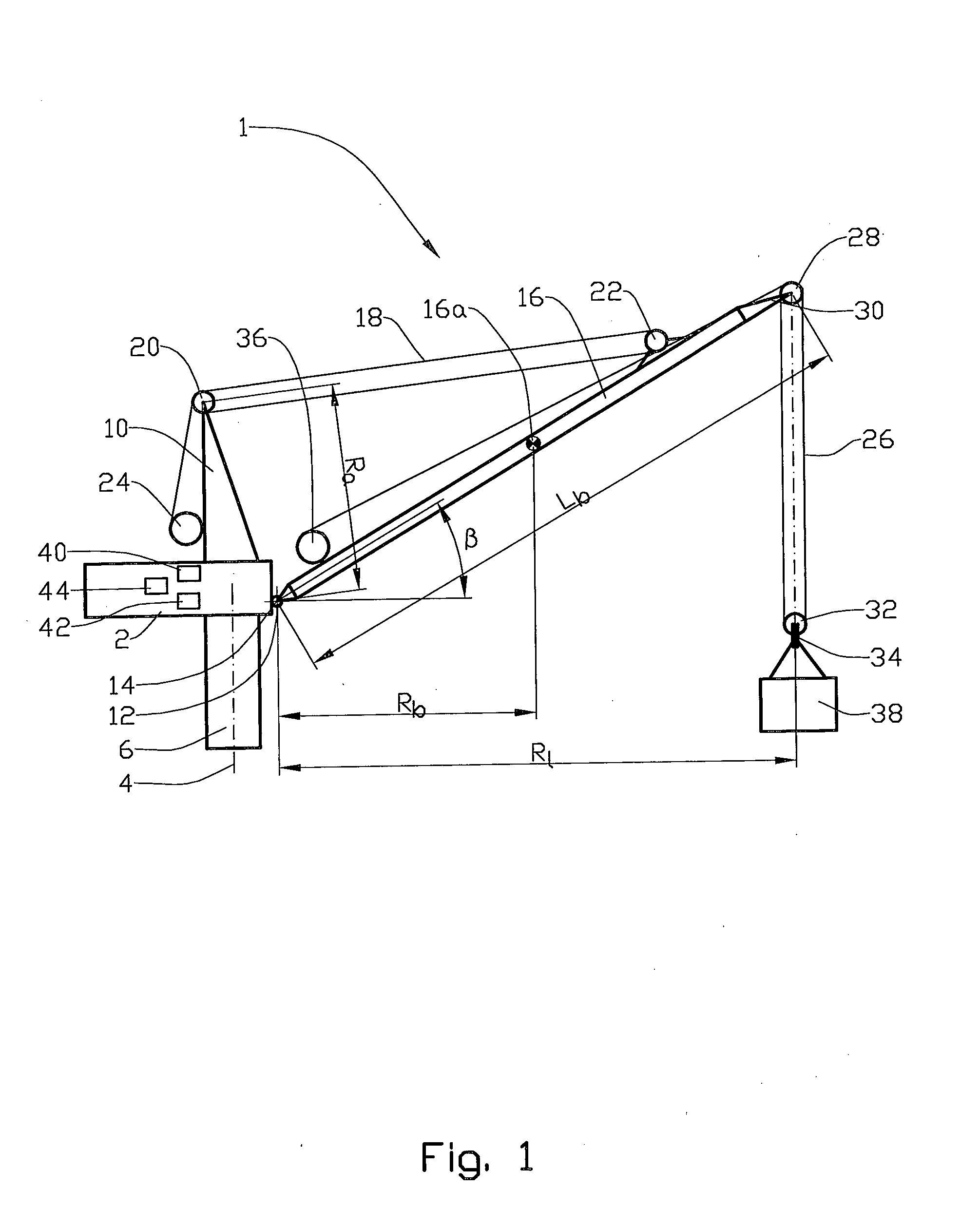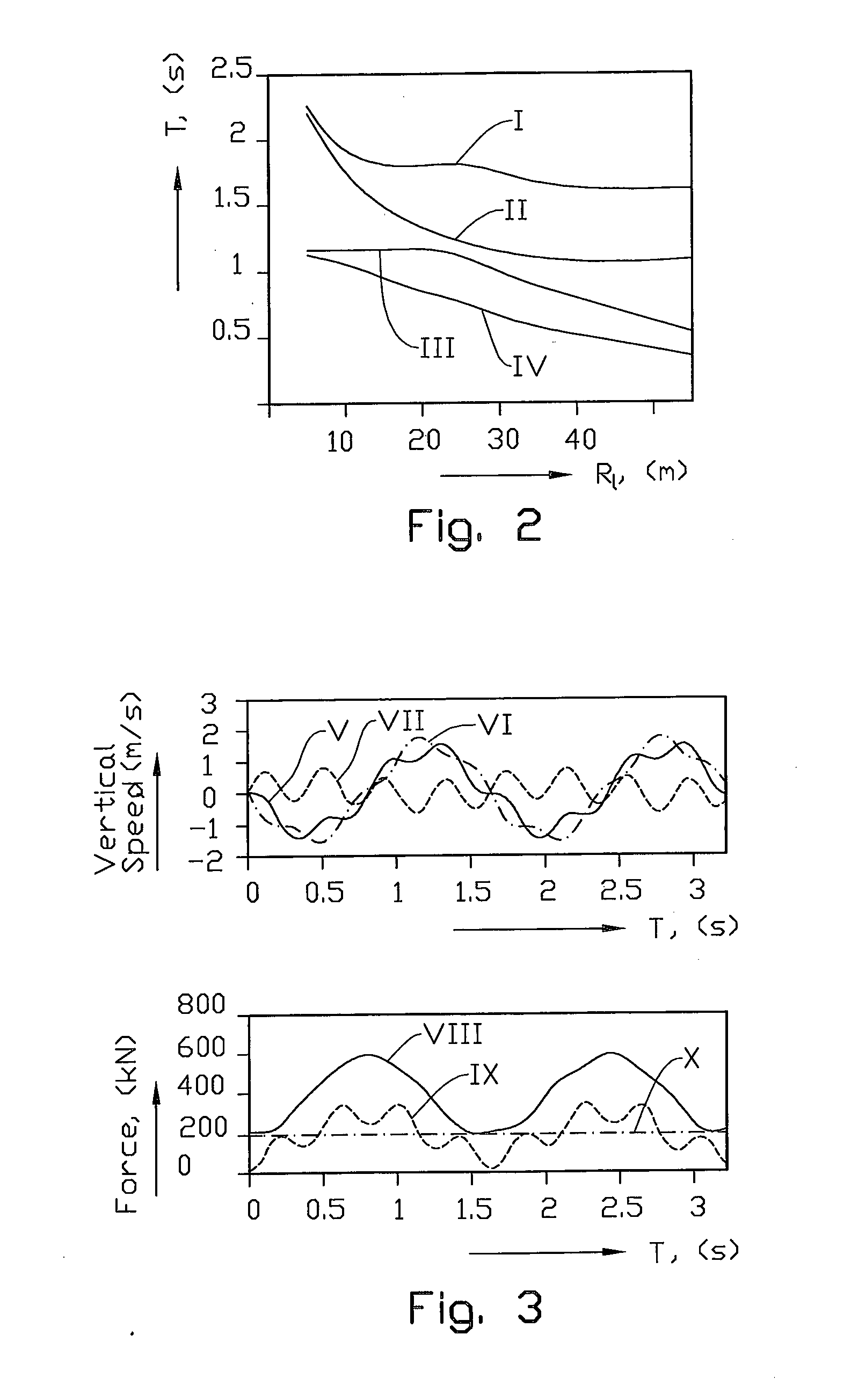Method for Reducing Dynamic Loads of Cranes
a technology of dynamic load and crane, which is applied in the direction of cranes, load-engaging elements, hoisting equipment, etc., can solve the problems of high cost, increased risk of dynamic overloading and damage, and increased risk of crane overloading, so as to reduce dynamic peak load, and dampen resonance oscillation and dynamic peak load
- Summary
- Abstract
- Description
- Claims
- Application Information
AI Technical Summary
Benefits of technology
Problems solved by technology
Method used
Image
Examples
Embodiment Construction
[0086]In the present document an offshore crane is utilized for explaining the invention. This does not in any way limit the scope of the document as the principles disclosed here are applicable for similar cranes wherever they are used.
[0087]In the present document electrical driven winches are utilized for explaining the invention. This does not in any way limit the scope of the document as the principles disclosed here are applicable also for hydraulically driven winches.
[0088]It is to be emphasized that the present invention is focusing on vertical load and boom oscillations, not on the of pendulum oscillations of the load. The latter problem is solved by a number of different techniques, see EP 1886965, U.S. Pat. No. 5,823,369 or U.S. Pat. No. 7,289,875
[0089]On the drawings the reference number 1 denotes a pedestal crane that includes a slewing platform 2 that is turnable about a vertical axis 4 of a pedestal 6. The pedestal 6 is fixed to a structure not shown.
[0090]An A-frame ...
PUM
 Login to View More
Login to View More Abstract
Description
Claims
Application Information
 Login to View More
Login to View More - R&D
- Intellectual Property
- Life Sciences
- Materials
- Tech Scout
- Unparalleled Data Quality
- Higher Quality Content
- 60% Fewer Hallucinations
Browse by: Latest US Patents, China's latest patents, Technical Efficacy Thesaurus, Application Domain, Technology Topic, Popular Technical Reports.
© 2025 PatSnap. All rights reserved.Legal|Privacy policy|Modern Slavery Act Transparency Statement|Sitemap|About US| Contact US: help@patsnap.com



